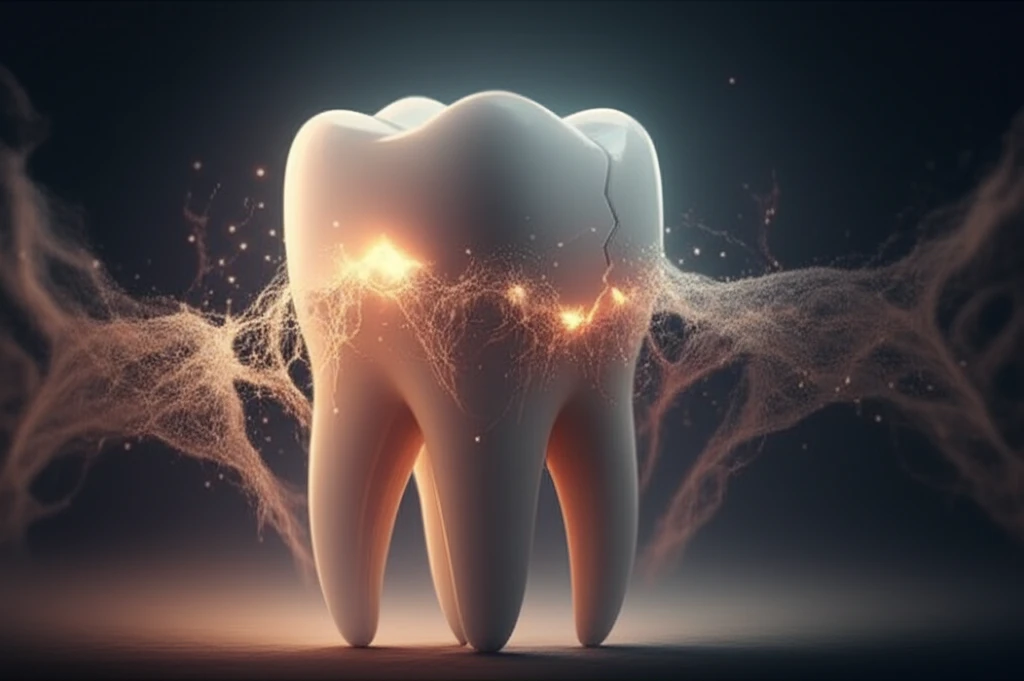
Platelet-Rich Fibrin (PRF) in Dentistry: The Future of Healing?
"Discover how Platelet-Rich Fibrin (PRF) is revolutionizing dental treatments, offering faster healing, reduced morbidity, and enhanced tissue regeneration for a brighter, healthier smile."
In modern medicine, particularly dentistry, the primary goal of any invasive procedure extends beyond merely addressing the immediate issue; it aims for complete eradication of infection and revitalization of affected tissues. This holistic approach has led to the introduction of various biological products designed to enhance the body’s natural healing processes. Among these, platelet concentrates have emerged as a promising avenue, harnessing the regenerative power of platelets to accelerate tissue repair and improve patient outcomes.
Since the 1990s, platelet concentrates have been used for tissue regeneration. These concentrates contain a higher concentration of platelets than normal blood. Platelet-Rich Plasma (PRP) was the first generation of concentrates. Now there's Platelet-Rich Fibrin (PRF). PRF is used alone and with grafts, delivering growth factors and anti-inflammatory benefits. It is used in a range of dental applications, from implantology and sinus lifts to treating endodontic and periodontal lesions, and even regenerating necrotic pulp.
This article explores Platelet-Rich Fibrin (PRF) in dentistry, highlighting its specifications, applications, and potential to revolutionize treatment approaches. Join us as we delve into how PRF is shaping the future of dental care, offering new possibilities for reducing patient morbidity and enhancing regenerative outcomes. Perfect for dental professionals, patients, and anyone keen to understand innovative health solutions.
What is Platelet-Rich Fibrin (PRF) and How Does It Enhance Healing?

Platelet-Rich Fibrin (PRF) is an autologous fibrin matrix that's rich in platelets, leukocyte cytokines, and growth factors. It was developed in France in 2001 by Choukroun. PRF is a second-generation platelet concentrate that enhances tissue repair and regeneration. It replaces Platelet-Rich Plasma (PRP). PRF is simple and safe to use, unlike PRP.
- Enhances Tissue Repair: Platelets release growth factors that stimulate cell proliferation and tissue regeneration.
- Reduces Inflammation: Leukocyte cytokines in PRF help modulate the inflammatory response, promoting a more balanced healing environment.
- Supports Angiogenesis: Growth factors like VEGF stimulate the formation of new blood vessels, improving nutrient supply to the healing site.
- Provides a Natural Scaffold: The fibrin matrix acts as a scaffold for cell migration and tissue organization, facilitating the regeneration process.
- Minimizes Risk: As an autologous material derived from the patient's own blood, PRF eliminates the risk of immune reactions and disease transmission.
The Future of Dental Healing with PRF
Platelet concentrates, particularly PRF, have shown great promise in regenerative medicine and dentistry. PRF is safer and simpler than previous platelet concentrates, making it ideal for clinical use. Its healing properties come from its fibrin composition. The fibrin matrix releases cytokines over 7-11 days, reducing healing time. The three-dimensional architecture promotes stem cell migration for better wound healing. PRF accelerates regeneration and enhances collagen synthesis. It is used with membranes and grafts in sinus augmentation, implant placement, endo-perio lesions, and alveolar bone loss. PRF is also used in endodontic treatment of necrotic teeth by regenerating dental pulp cells. As research advances, PRF is expected to play a significant role in improving patient care and outcomes.
